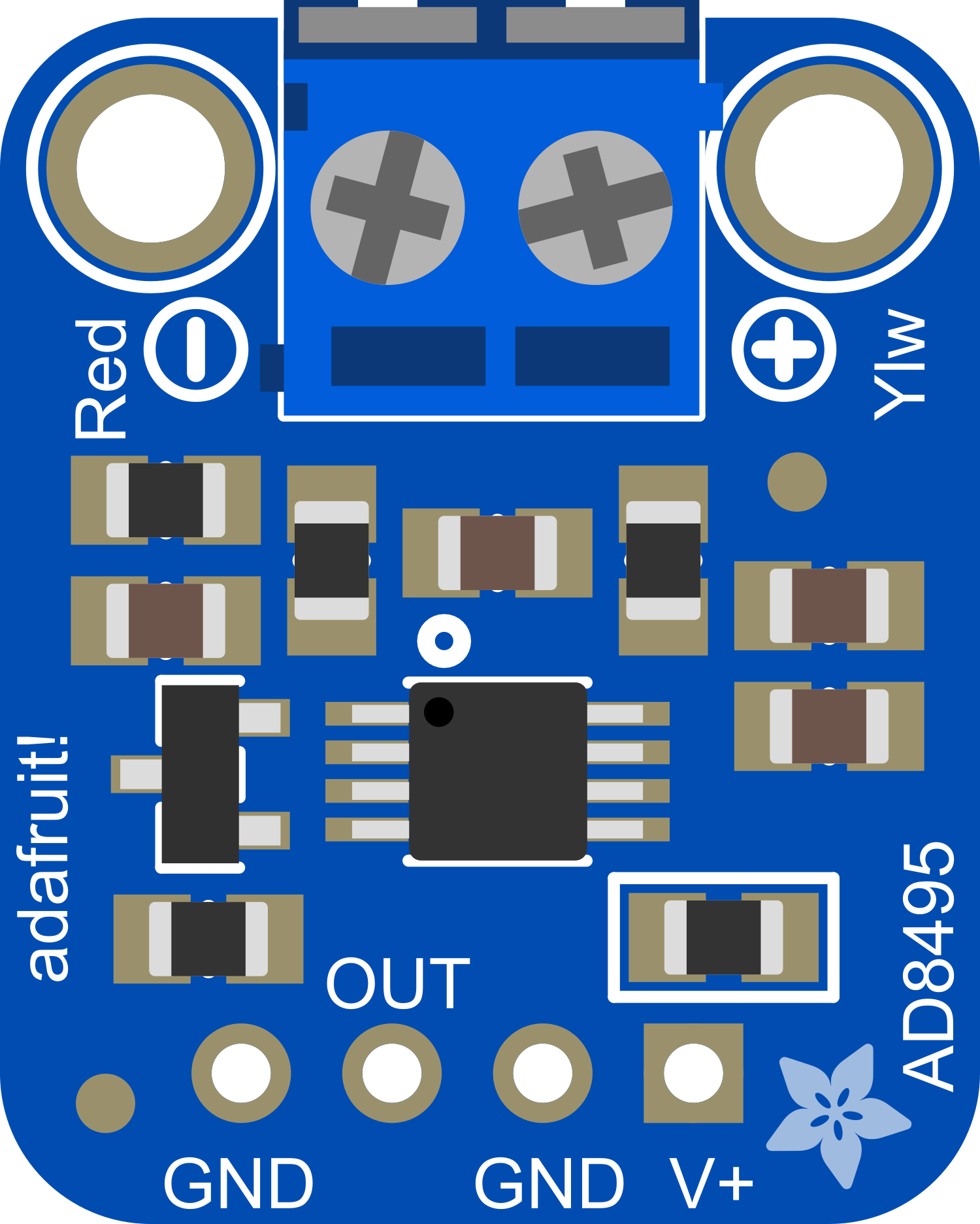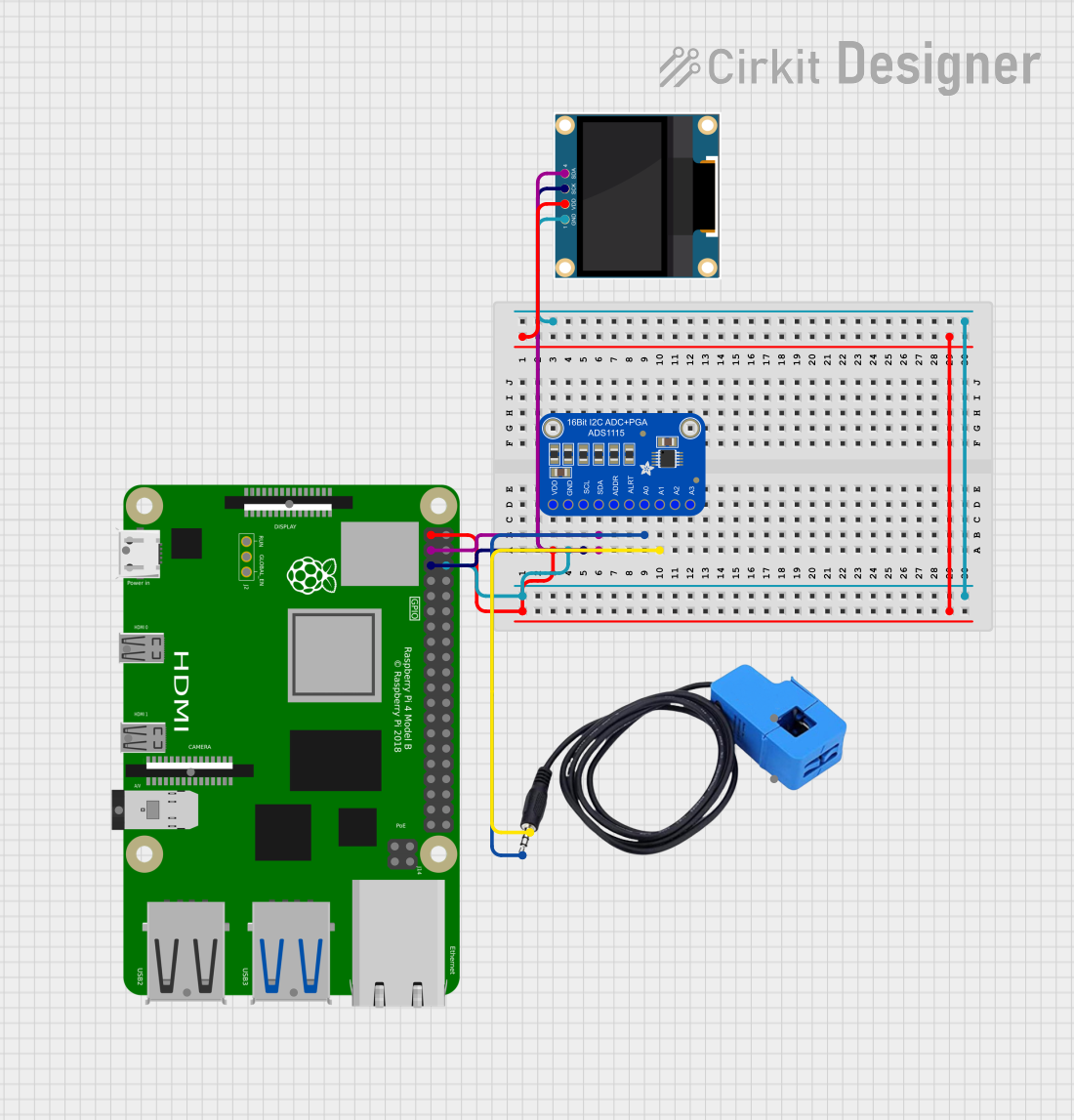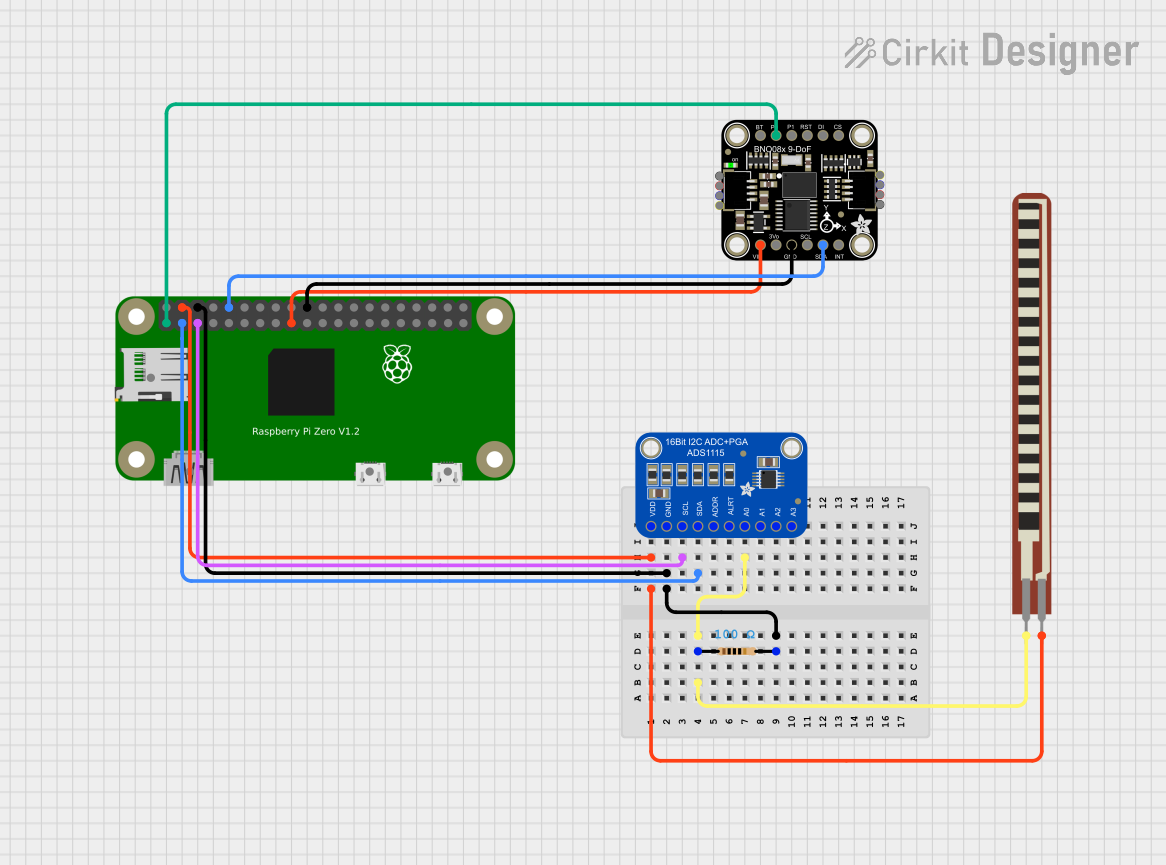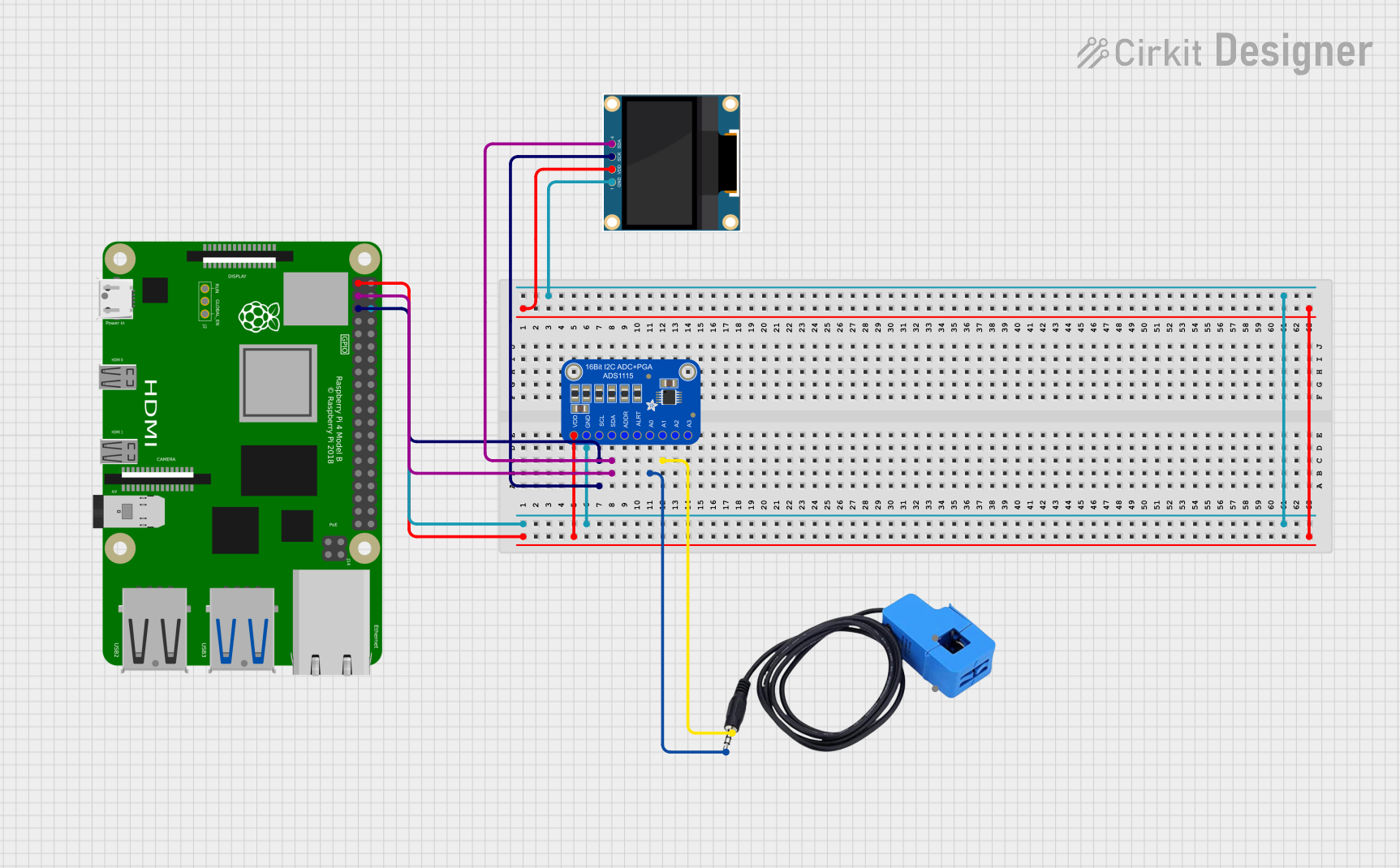
How to Use Adafruit AD8495: Examples, Pinouts, and Specs

 Design with Adafruit AD8495 in Cirkit Designer
Design with Adafruit AD8495 in Cirkit DesignerIntroduction
The Adafruit AD8495 is a precision analog output K-type thermocouple amplifier which makes it simple to measure temperatures with a wide range using a type K thermocouple. It is designed to amplify the tiny voltage differences across the thermocouple's leads and convert them into a more easily readable output that correlates with temperature. The module includes cold-junction compensation and an analog output that can be interfaced with analog-to-digital converters (ADCs) on microcontrollers such as the Arduino UNO. This makes the AD8495 an ideal choice for a variety of temperature sensing applications in electronics, industrial systems, and hobbyist projects.
Explore Projects Built with Adafruit AD8495

 Open Project in Cirkit Designer
Open Project in Cirkit Designer
 Open Project in Cirkit Designer
Open Project in Cirkit Designer
 Open Project in Cirkit Designer
Open Project in Cirkit Designer
 Open Project in Cirkit Designer
Open Project in Cirkit DesignerExplore Projects Built with Adafruit AD8495

 Open Project in Cirkit Designer
Open Project in Cirkit Designer
 Open Project in Cirkit Designer
Open Project in Cirkit Designer
 Open Project in Cirkit Designer
Open Project in Cirkit Designer
 Open Project in Cirkit Designer
Open Project in Cirkit DesignerTechnical Specifications
Key Technical Details
- Supply Voltage (Vcc): 3.3V to 5.5V
- Output Type: Analog voltage
- Temperature Measurement Range: -250°C to +750°C (with appropriate thermocouple)
- Output Voltage Range: 0V to Vcc
- Accuracy: ±2°C
- Cold Junction Compensation: Included
- Interface: Analog
Pin Configuration and Descriptions
| Pin Number | Name | Description |
|---|---|---|
| 1 | V+ | Supply voltage input (3.3V to 5.5V) |
| 2 | GND | Ground connection |
| 3 | VOUT | Analog voltage output proportional to the temperature |
| 4 | TC+ | Thermocouple positive connection |
| 5 | TC- | Thermocouple negative connection |
Usage Instructions
Interfacing with an Arduino UNO
Connecting the Module:
- Connect the V+ pin to the 5V output on the Arduino UNO.
- Connect the GND pin to one of the GND pins on the Arduino UNO.
- Connect the VOUT pin to an analog input on the Arduino UNO (e.g., A0).
- Connect the thermocouple leads to the TC+ and TC- terminals, ensuring correct polarity.
Programming the Arduino:
- Use the
analogRead()function to read the voltage from the AD8495 output. - Convert the analog reading to a temperature value using the appropriate conversion factor.
- Use the
Example Arduino Code
const int thermocouplePin = A0; // AD8495 output connected to A0
void setup() {
Serial.begin(9600);
}
void loop() {
int analogValue = analogRead(thermocouplePin);
float millivolts = (analogValue / 1023.0) * 5000; // Convert to millivolts
float temperatureC = millivolts / 5; // 5mV per degree Celsius
Serial.print("Temperature: ");
Serial.print(temperatureC);
Serial.println(" C");
delay(1000); // Wait for 1 second before reading again
}
Important Considerations and Best Practices
- Ensure that the thermocouple wires are connected with the correct polarity to the module.
- Avoid placing the AD8495 near heat sources or areas with rapid temperature changes to prevent false readings.
- Use twisted pair wires for the thermocouple to minimize electrical noise and interference.
- When using long thermocouple wires, consider shielding and proper grounding to reduce potential signal degradation.
Troubleshooting and FAQs
Common Issues
Inaccurate Temperature Readings:
- Check the thermocouple connections for correct polarity.
- Verify that the AD8495 is not subjected to significant temperature gradients that could affect the cold-junction compensation.
- Ensure that the Arduino ADC reference voltage is stable and accurate.
No Output Voltage:
- Confirm that the supply voltage is within the specified range and properly connected.
- Inspect the thermocouple for any damage or disconnections.
FAQs
Q: Can the AD8495 be used with other types of thermocouples? A: The AD8495 is specifically calibrated for type K thermocouples. Using other types may result in inaccurate readings.
Q: What is the resolution of the temperature measurement? A: The resolution depends on the ADC resolution of the microcontroller. For an Arduino UNO with a 10-bit ADC and a 5V reference, the resolution is approximately 0.488°C.
Q: How can I improve the accuracy of my temperature measurements? A: Use a stable power supply, ensure proper thermocouple connections, and calibrate the system if necessary. Additionally, using a microcontroller with a higher resolution ADC can improve the measurement accuracy.
For further assistance or inquiries, consult the Adafruit AD8495 datasheet and the support forums for community-driven troubleshooting and tips.